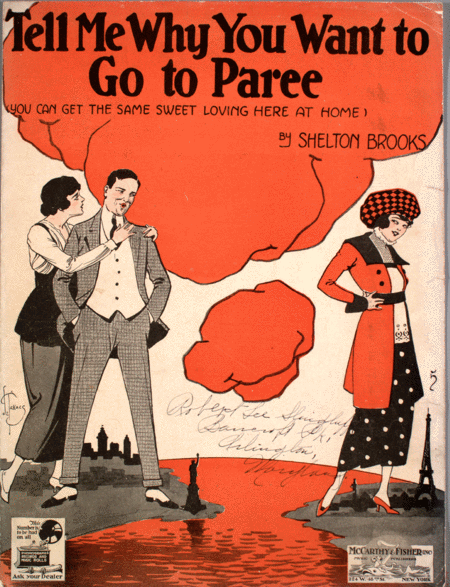Piano and voice - Digital Download SKU: LV.23848 Composed by Shelton Brooks. Courtship, Love, Statue of Liberty, Eiffel Tower, Silhouettes, Caricatures, France, World War I. Lester S. Levy Collection. 3 pages. Published by Johns Hopkins University Sheridan Libraries (LV.23848). Tell Me Why You Want To Go To Paree. By Shelton Brooks. Published 1919 by McCarthy & Fisher, Inc., 224 W. 46th St. in New York. Composition of strophic with chorus with piano and voice instrumentation. Subject headings for this piece include Courtship, Love, Statue of Liberty, Eiffel Tower, Silhouettes, Caricatures, France, World War I. First line reads Johnny Moore was longing for to go to gay Paree.. About The Lester S. Levy CollectionThe Lester S. Levy Collection of Sheet Music consists of over 29,000 pieces of American popular music. Donated to Johns Hopkins University Sheridan Libraries, the collection's strength is its thorough documentation of nineteenth-century American through popular music. This sheet music has been provided by Project Gado, a San Francisco Bay Area startup whose mission is to digitize and share the world's visual history.WARNING: These titles are provided as historical documents. Language and concepts within reflect the opinions and values of the time and may be offensive to some.
